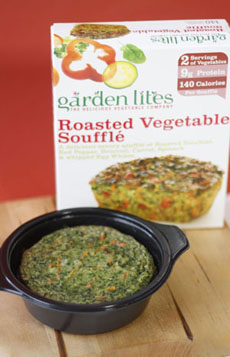|
Different flavors could be layered and frozen, one at a time; sorbet layers could be alternated with ice cream. The bombe’s center could be filled with dried and/or fresh fruits, depending on season: berries and grapes, raisins and sultanas. A ladyfinger or thin cake layer could be added. When unmolded, the bombe could be iced and decorated.
Today’s basic bombes are less elaborate so they’re accessible to the home cook. They look like this, a combination of three or four flavors.
We have an even easier variation for you: a one-layer individual bombe. The recipe is courtesy of Starbucks and is made with their new Mocha Cookie Crumble Frappuccino Ice Cream. The mascarpone frosting provides a tiramisu effect when used with coffee ice cream, but complements any flavor of ice cream.
Since this recipe is made in individual portions, you don’t even have to worry about neatly slicing a conventional bombe. Serves 4.
RECIPE FOR INDIVIDUAL ICE CREAM BOMBES
1 pint Starbucks Mocha Cookie Crumble Frappuccino Ice Cream, slightly softened
8 soft lady finger cookies, cut in half crosswise
1/2 cup heavy or whipping cream
1/2 cup mascarpone
1 tablespoon confectioners’ sugar
1 teaspoon cocoa powder
Preparation
1. Line 4 six-ounce ramekins or custard cups with plastic wrap. (Custard cups provide a more bombe-like slope.) Evenly divide ice cream into ramekins, pressing firmly.
2. Arrange 4 lady finger halves onto the top of each ramekin, which will become the bottom layer when the bombe is unmolded. Wrap tightly in plastic wrap. Freeze at least 2 hours.
3. Meanwhile, beat the heavy cream, mascarpone and confectioners’ sugar with an electric mixer in medium bowl until soft peaks form. Place in refrigerator until ready to serve.
4. Remove ice cream bombes from freezer and unwrap. Invert onto dessert plates. Frost top and sides with mascarpone mixture, making decorative peaks. Dust with cocoa powder.
Find more of our favorite ice cream and sorbet recipes.
Check out all the different ice cream desserts in our Ice Cream Glossary.
|



